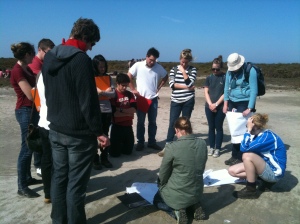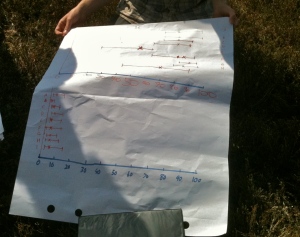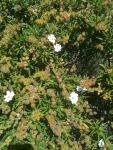With colleagues, we have two grants supporting our work over the coming 3 years. Both concern eucalypt trees and the traits that govern performance: distribution along environmental gradients in one grant; and maximum attainable height in the other. Our plan is to recruit one postdoc responsible for statistical modelling[1] of existing data, field sampling tree traits, and growth experiments, based at QAECO within the School of BioSciences at UM. The second postdoc will be based at UNSW and will mainly conduct modelling: ecoevolutionary models[2], some mechanistic models and some statistical models. We expect a high degree of collaboration with other projects the PIs have. We will also be looking to recruit students who are competitive for scholarships. Get in touch with me or Daniel if you are interested.
- Pollock LJ, Morris WK, Vesk PA (2012) The role of functional traits in species distributions revealed through a hierarchical model. Ecography 35:716-725.
- Falster DS, FitzJohn RG, Brännström Å, Dieckmann U & Westoby M. (2016). plant: A package for modelling forest trait ecology and evolution. Methods Ecol Evol, 7:136-146
Eucalypt futures: using functional traits to predict species distributions and responses to environmental change
(Peter Vesk (UM), Daniel Falster, Martin De Kauwe (UNSW), Rachael Gallagher (Macquarie) and Guru Guillera-Arroita (U Melb), funded by Eucalypt Australia, Victorian DELWP).
Through the use of functional traits (physical, biochemical, phenological, and physiological adaptations affecting how species grow, survive, and reproduce), collected on hundreds of Eucalypts across diverse habitats, this project will develop unprecedented capacity to explain and predict distributions of diverse Eucalypts across environmental gradients. We will combine these trait data with species distribution, mechanistic eco-evolutionary, and physiological models to generate a robust, integrated assessment of the drivers of Eucalypt species distribution, and thereby the impact of climate change on Eucalypts.
Our overall objective is to improve our understanding and ability to predict Eucalypt responses to environments. To do this, we aim to resolve the conflicting predictions and diverse understanding from four approaches to modelling Eucalypt sensitivity to environment.
Escalating the arms race: Understanding when and how trees get really tall
(Daniel Falster (UNSW) and Peter Vesk (UM), funded by ARC Discovery Program)
Australia’s giant Eucalypt trees are an amazing phenomenon and resource; underpinning unique ecosystems, rich in timber, stored carbon, and animal habitat. While tree height generally arises via an evolutionary arms race for light, the race has escalated dramatically in some locations and species. Using a computational framework that simulates adaptation driven by size-structured competition, this project will quantify how distinct factors-including climate, recruitment, and disturbance-enhance the race for light and can thereby explain the origins of Australia’s giant Eucalypts. With calibrated models of species evolution, coupled with targeted fieldwork and big data, this project clarifies key forces shaping present and future vegetation.






